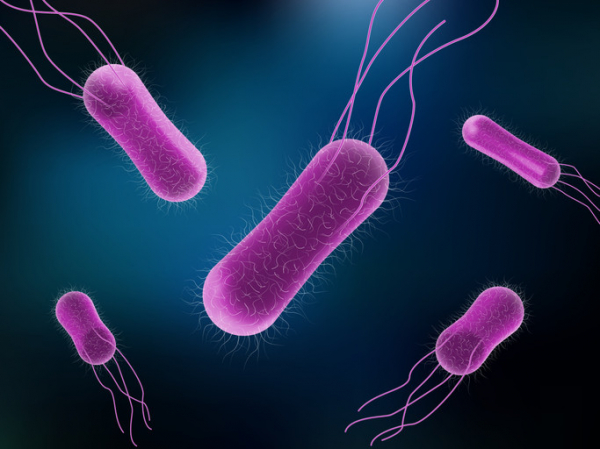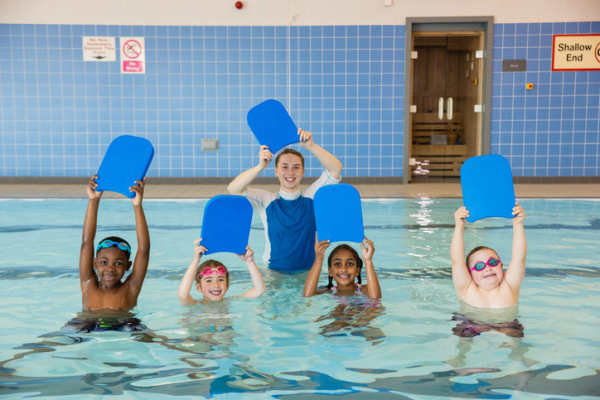
Salmonella is sneaky: Watch out

Pop quiz: what is Salmonella? If you’ve ever had a run-in with this bacteria, you know it can cause a food-borne illness called salmonellosis, a form of food poisoning. But you may not know that Salmonella bacteria sicken an estimated 1.35 million people and hospitalize 26,500 every year in the United States. What’s more, it kills more total people than any other type of food poisoning.
And Salmonella bacteria can be sneaky — not only by triggering unusual complications, but infecting people in startling ways, says Dr. Elizabeth Hohmann, an infectious disease specialist at Massachusetts General Hospital. One patient she treated showed up with an abdominal aortic aneurysm — a dangerous bulge in the lower section of the body’s largest artery — that looked infected. Testing revealed a culprit some would find surprising: Salmonella.
“It’s just an interesting organism and it can be kind of scary,” she says.
How do people get infected by Salmonella?
Many of the foods Salmonella bacteria lurk in are raw or undercooked. Breaded raw chicken products like nuggets and chicken Kiev are one way it may reach your table. But a variety of foods have been implicated — including organic basil, cantaloupes, ground beef, nut butters, raw cookie dough, eggs, raw or unpasteurized milk, and flour.
Even small pets such as turtles and frogs, along with dog food, have contributed to Salmonella outbreaks in recent years.
You can also become infected by handling contaminated food and spreading the bacteria from your hands to your mouth. Additionally, you can spread it to others on your hands or even on your clothes without becoming sick yourself.
“It’s a bug that’s carried in stool and animal feces and is also present in the environment,” Dr. Hohmann says. “So it can set up shop in lots of different inanimate objects, soils, and machinery, especially in moist environments.”
What symptoms can Salmonella cause?
Most of the time, Salmonella infection leads to gastroenteritis, usually causing just an upset stomach, abdominal cramps, and diarrhea. These symptoms can start as soon as six hours after ingesting the bacteria. Typically, symptoms resolve on their own within two to three days.
Some people have such mild symptoms they’re barely noticeable. “The classic case might be a college student who eats a burrito from a sketchy place, gets sick for a couple of days, gets better, and doesn’t think anything of it,” says Dr. Hohmann.
Sometimes symptoms are more serious, such as severe abdominal cramping and bloody diarrhea, or unexplained high fever and marked fatigue. These symptoms require a call to your doctor.
How is salmonellosis treated?
Most people will get better on their own without any medicines. Replacing lost fluids by sipping water or electrolyte drinks to avoid dehydration will help.
Call a doctor if you have
- diarrhea and a fever higher than 102° F
- diarrhea that doesn’t improve after three days
- bloody stools
- vomiting so severe it prevents you from keeping liquids down.
Treating the infection with medicine comes with an annoying paradox, Dr. Hohmann says. If doctors decide to prescribe antibiotics, the person taking the medicine may shed the organism for longer than if they were never treated. “Then that person may have the opportunity — either through poor personal hygiene, sex, or working as a food worker — to spread it to others,” she explains. “It’s challenging.”
What complications can Salmonella lead to?
Some people get sicker with salmonellosis than others, with seemingly no rhyme or reason. But certain folks are especially vulnerable to serious infection, including:
- adults 65 and older
- pregnant women
- children under 5
- people whose immune systems are weakened by diseases (such as cancer) or treatments (such as immunosuppressing drugs).
A small percentage of those infected can have Salmonella in their blood, which can spread the infection to other parts of the body such as the urinary tract, bones, joints, or central nervous system (brain and spinal fluid).
And, like Dr. Hohmann’s patient with the abdominal aortic aneurysm, on rare occasions Salmonella can lead to unusual blood vessel complications in people who already have atherosclerosis, blockage of the arteries caused by plaque buildup.
“It’s not that common,” she says. “Many physicians are aware of it, so they take special care if Salmonella is found in a person with vascular disease.”
What steps can you take to avoid Salmonella?
While new USDA rules that take effect in 2025 may help fuel recalls of certain foods, we all can take steps to avoid the food poisoning, illness, and hospitalizations that Salmonella exposure can cause.
Dr. Hohmann and the CDC suggest these strategies:
- Using hot water and soap, wash cutting boards or plates on which you cut into raw foods — including vegetables and fruit — before using those surfaces for other purposes. If possible, use separate cutting boards for produce, meat, and fish.
- Refrigerate or freeze foods that are perishable, prepared, or left over within two hours to thwart salmonella growth.
- Always wash hands well with soap and water before preparing food and after contact with animals, using the toilet, or changing diapers.
- If you have a sick pet, take extra care handling its feces and wash your hands thoroughly afterward.
Take additional steps to help more vulnerable people stay healthy:
- Don’t let young children touch high-risk animals, such as turtles, frogs, chickens, or ducks. “And if you’re taking young children to a petting zoo, they should not be petting animals unless you can disinfect their hands immediately afterward,” she says.
- Older adults and those with compromised immune systems should take extra care to wash and cook foods thoroughly.
- People who have had a transplant (such as a kidney transplant) should not keep reptiles or amphibians as pets.
“You hate to make people paranoid, so that we’re washing our lettuce leaves with soap, but it’s worth thinking about these things, particularly if you have people in your household who are susceptible — which is an increasing number of people,” Dr. Hohmann says.
About the Author

Maureen Salamon, Executive Editor, Harvard Women's Health Watch
Maureen Salamon is executive editor of Harvard Women’s Health Watch. She began her career as a newspaper reporter and later covered health and medicine for a wide variety of websites, magazines, and hospitals. Her work has … See Full Bio View all posts by Maureen Salamon
About the Reviewer

Howard E. LeWine, MD, Chief Medical Editor, Harvard Health Publishing
Dr. Howard LeWine is a practicing internist at Brigham and Women’s Hospital in Boston, Chief Medical Editor at Harvard Health Publishing, and editor in chief of Harvard Men’s Health Watch. See Full Bio View all posts by Howard E. LeWine, MD

Swimming lessons save lives: What parents should know

Before going any further, here’s the main thing parents should know about swimming lessons: all children should have them.
Every year, over 4,500 people die from drowning in the United States — and, in fact, drowning is the leading cause of death for children ages 1 to 4. Swimming lessons can’t prevent all of those deaths, but they can prevent a lot of them. A child doesn’t need to be able to swim butterfly or do flip turns, but the ability to get back to the surface, float, tread water, and swim to where they can stand or grab onto something can save a life.
10 things parents should know about swimming lessons
As you think about swimming lessons, it’s important to know:
1. Children don’t really have the cognitive skills to learn to swim until they are around 4 years old. They need to be able to listen, follow directions, and retain what they’ve learned, and that’s usually around 4 years old, with some kids being ready a little earlier.
2. That said, swim lessons between 1 and 4 years old can be useful. Not only are some kids simply ready earlier, younger children can learn some skills that can be useful if they fall into the water, like getting back to the side of a pool.
3. The pool or beach where children learn must be safe. This sounds obvious, but safety isn’t something you can assume; you need to check it out for yourself. The area should be clean and well maintained. There should be lifeguards that aren’t involved in teaching (since teachers can’t be looking at everyone at all times). There should be something that marks off areas of deeper water, and something to prevent children from getting into those deeper areas. There should be lifesaving and first aid equipment handy, and posted safety rules.
4. The teachers should be trained. Again, this sounds obvious — but it’s not always the case. Parents should ask about how teachers are trained and evaluated, and whether it’s under the guidelines of an agency such as the Red Cross or the YMCA.
5. The ratio of kids to teachers should be appropriate. Preferably, it should be as low as possible, especially for young children and new swimmers. In those cases, the teacher should be able to have all children within arm’s reach and be able to watch the whole group. As children gain skills the group can get a bit bigger, but there should never be more than the teacher can safely supervise.
6. There should be a curriculum and a progression — and children should be placed based on their ability. In general, swim lessons progress from getting used to the water all the way to becoming proficient at different strokes. There should be a clear way that children are assessed, and a clear plan for moving them ahead in their skills.
7. Parents should be able to watch for at least some portion. You should be able to see for yourself what is going on in the class. It’s not always useful or helpful for parents to be right there the whole time, as it can be distracting for children, but you should be able to watch at least the beginning and end of a lesson. Many pools have an observation window or deck.
8. Flotation devices should be used thoughtfully. There is a lot of debate about the use of “bubbles” or other flotation devices to help children learn to swim. They can be very helpful with keeping children safe at the beginning, and helping them learn proper positioning and stroke mechanics instead of swimming frantically to stay afloat, but if they are used, the lessons should be designed to gradually decrease any reliance on them.
9. Being scared of the water isn’t a reason not to take, or to quit, swimming lessons. It’s common and normal to be afraid of the water, and some children are more afraid than others. While you don’t want to force a child to do something they are terrified of doing, giving up isn’t a good idea either. Start more gradually, with lots of positive reinforcement. The swim teacher should be willing to help.
10. Just because a child can swim doesn’t mean he can’t drown. Children can get tired, hurt, trapped, snagged, or disoriented. Even strong swimmers can get into trouble. While swimming lessons help save lives, children should always, always be supervised around water, and should wear life jackets for boating and other water sports.
The Centers for Disease Control and Prevention website has helpful information on preventing drowning. The American Red Cross offers an online water safety course for caregivers and parents and water safety videos for children. Many public pools and organizations like Boys & Girls Clubs and the YMCA offer swimming classes for all ages.
About the Author

Claire McCarthy, MD, Senior Faculty Editor, Harvard Health Publishing
Claire McCarthy, MD, is a primary care pediatrician at Boston Children’s Hospital, and an assistant professor of pediatrics at Harvard Medical School. In addition to being a senior faculty editor for Harvard Health Publishing, Dr. McCarthy … See Full Bio View all posts by Claire McCarthy, MD
About the Reviewer

Howard E. LeWine, MD, Chief Medical Editor, Harvard Health Publishing
Dr. Howard LeWine is a practicing internist at Brigham and Women’s Hospital in Boston, Chief Medical Editor at Harvard Health Publishing, and editor in chief of Harvard Men’s Health Watch. See Full Bio View all posts by Howard E. LeWine, MD